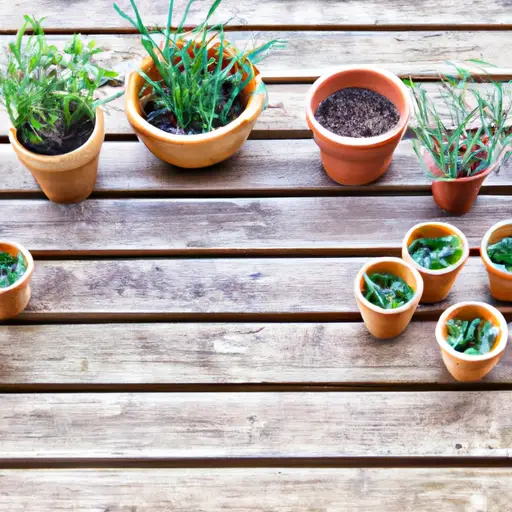Container gardening is a popular and rewarding way to bring nature into small spaces. Whether you live in an apartment with a tiny balcony or have a limited backyard, container gardening allows you to enjoy the joys of gardening without the need for vast areas of land.
So, what exactly is container gardening? It is the practice of growing plants in containers like pots, baskets, boxes, or even old tires. It provides flexibility and mobility, allowing you to move your garden wherever you desire. Container gardening also opens up endless possibilities as you can grow flowers, herbs, vegetables, or even create decorative arrangements effortlessly.
For beginners interested in exploring container gardening, let’s dive into a beginner’s guide that will help you embark on this delightful journey.
1. Choosing the Right Containers: When selecting containers for your plants, ensure they have drainage holes at the bottom to prevent waterlogging. Containers made of materials like plastic, terracotta, or wood are popular choices because they offer good drainage and insulation for plant roots.
2. Deciding on Soil Mix: Container plants require well-draining soil that holds enough moisture while avoiding excessive water retention. A mix of potting soil combined with compost or peat moss provides nutrients and improves drainage.
3. Picking the Perfect Location: Observe how much sunlight different areas of your space receive throughout the day. Most plants thrive in full sun to partial shade conditions. Place your containers accordingly to ensure your plants get adequate light.
4. Selecting Suitable Plants: Consider your space limitations before choosing plants for your container garden. Compact or dwarf varieties work well in smaller containers, while vining plants may require larger pots or hanging baskets for proper growth.
5. Watering and Maintenance: Container plants usually need more frequent watering than those grown in traditional gardens due to their limited soil volume. Check soil moisture regularly and water thoroughly when needed. Additionally, fertilize your container plants periodically to provide them with essential nutrients.
6. Managing Pests and Diseases: Just like any garden, container plants are also susceptible to pests and diseases. Keep a close eye on your plants and take necessary measures like using organic pest control methods or removing affected leaves to ensure your garden stays healthy.
7. Experimenting with Design: Container gardening offers an excellent opportunity to unleash your creativity in the form of stunning plant combinations. Play with various colors, textures, and heights to create visually appealing arrangements that suit your taste and style.
8. Harvesting the Fruits of Your Labor: One of the best parts of container gardening is enjoying freshly harvested produce. From plucking juicy tomatoes to harvesting aromatic herbs, relish the satisfaction of growing your own food from scratch.
Container gardening is a versatile endeavor that can be tailored to fit any skill level or available space. It not only allows you to connect with nature but also brings beauty and life into your surroundings. Whether you’re a beginner or experienced gardener, container gardening offers endless possibilities for creating a vibrant and bountiful garden right at your fingertips. So, get your hands dirty, embrace the joys of container gardening, and watch as your little piece of paradise blossoms before your eyes.













